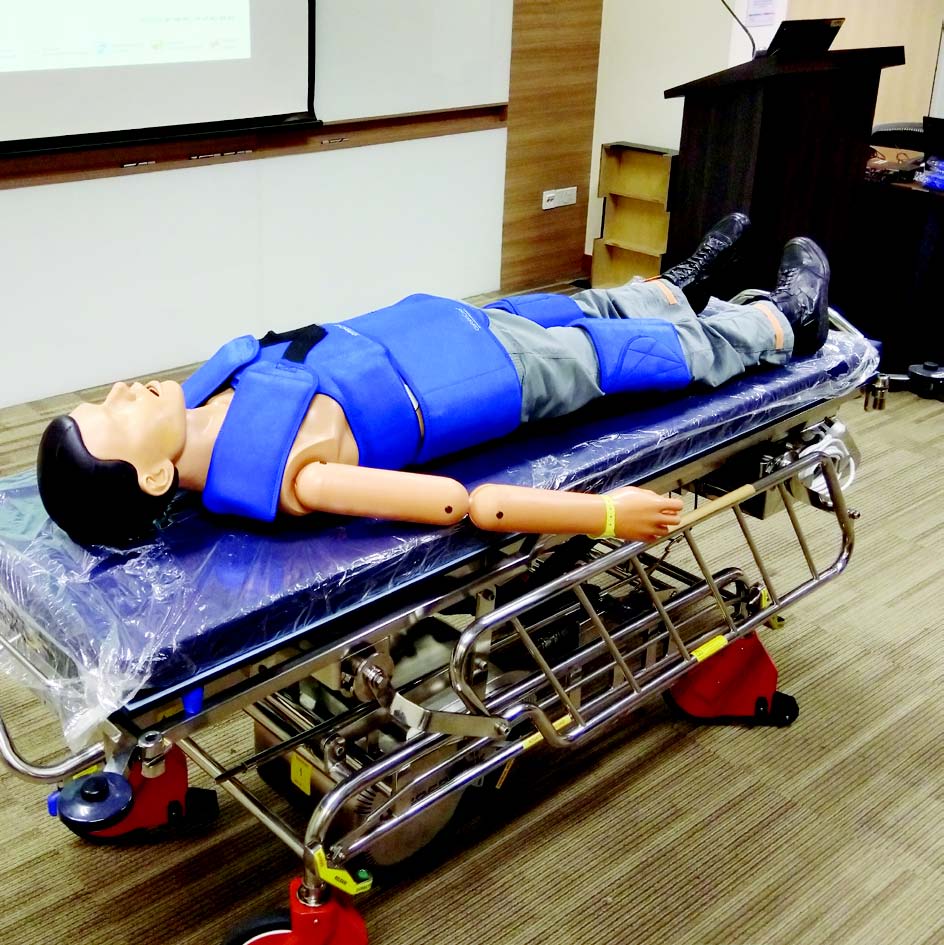During a cardiac arrest, it is important to cool the body temperature down quickly to preserve the function of the brain and other vital organs.
It won’t quite freeze a person the way Darth Vader did to Han Solo in Star Wars. But a new cooling suit that has been developed by Singapore General Hospital (SGH) and an industry partner, Global Healthcare SG, for medical emergencies can quickly and safely lower the body temperature in victims of cardiac arrest.
Bringing the body temperature down to about 34.0°C from the normal 37.5°C has been shown in research to protect the brain and other vital organs while treatment is being given following a cardiac arrest, said Professor Marcus Ong, Senior Consultant, Department of Emergency Medicine, SGH.
 “We don’t want them to just survive. We want them to survive with intact brain function and be able to go back to normal life. That’s the aim,” said Prof Ong, who is also Medical Director, Unit for Prehospital Emergency Care (UPEC), and Chairman, Pan Asian Resuscitation Outcomes Study (PAROS).
“We don’t want them to just survive. We want them to survive with intact brain function and be able to go back to normal life. That’s the aim,” said Prof Ong, who is also Medical Director, Unit for Prehospital Emergency Care (UPEC), and Chairman, Pan Asian Resuscitation Outcomes Study (PAROS).
When cardiac arrest occurs, the heart suddenly stops functioning, and no oxygen goes to the brain and other vital organs. The priority is to restart the heart again. Once that is done, therapeutic thermal management or body cooling can be started. Patients are kept at 34°C for about 24 hours in intensive care, before the body temperature is gradually returned back to normal and the patient is woken up.
Better than ice
The body can be cooled down quickly in other ways, such as using ice packs and circulating chilled saline through the veins intravenously. But these can be messy and bring on other complications.
Although cooling suits are available in the market, they are costly. For instance, a single-use cooling suit with coolant previously used in SGH was bulky and expensive — it cost US$1,000 for each use. Thus, Prof Ong began exploring the idea of a reusable, cheaper cooling suit. Key to this was the use of a carbon graphite material, which is much more powerful than ice in lowering temperature.
“The result is a suit that can be adjusted to any body shape or size.It is reusable and cleaned after every use. It is also far cheaper at around US$200 for each use,” said Prof Ong.
The suit, named the CarbonCool® Suit™, consists of an outer garment made of neoprene and thermoplastic polyurethane held together with velcro tape. It has pockets for 20 cooling pads known as MPads™, which are filled with a graphite water solution that can transfer heat 15 times better than ice.
Safe and effective
In a study to examine its safety and viability, Prof Ong and a team of researchers collected data on patients with cardiac arrest sent to SGH between April 2010 and December 2017. Between 2010 and 2015, patients were given ice packs and cold saline to bring down their body temperature. From July 2015 to December 2017, patients were given the experimental cooling device, and their temperatures monitored via an oesophageal temperature probe.
According to the study’s author, Ms Nur Shahidah Ahmad, SGH Senior Clinical Research Coordinator, it took 73 minutes for the group of 40 patients who wore the cooling suit to have their body temperature lowered to 34°C, compared to 142 minutes for the other group of 84 patients.
“We wanted to hit the target temperature of 34°C within two hours. With the traditional devices — ice packs and intravenous cold saline — that target was more difficult to reach. With the cooling suit, we were able to reach the target,” said Ms Shahidah.
Although the study didn’t assess for survival, other research has shown that survival prospects were enhanced when body temperature was brought down quickly and in a controlled manner, Ms Shahidah said. However, she noted that since 2015, the percentage of patients who regained good brain function after cardiac arrest has risen to 60 per cent from 20-30 per cent before.
It is important for the study to show that the cooling suit is a safe, effective, and fast alternative to other cooling devices. The cooling suit is just one of a slew of emergency devices and initiatives that have been put in place in recent years to boost the survival of people who collapse at home or in public due to a heart attack or cardiac arrest.
The cooling suit is now used at SGH’s emergency department as a standard-of-care treatment for post-resuscitation and heat stroke management. It also has the potential to be used in emergencies outside the hospital as it is reusable, portable, and does not require a power source.
